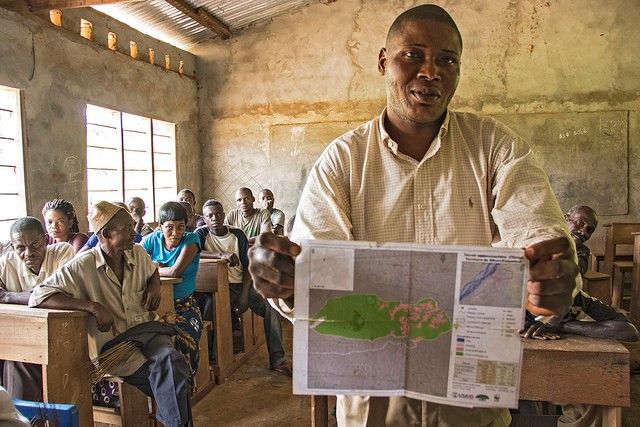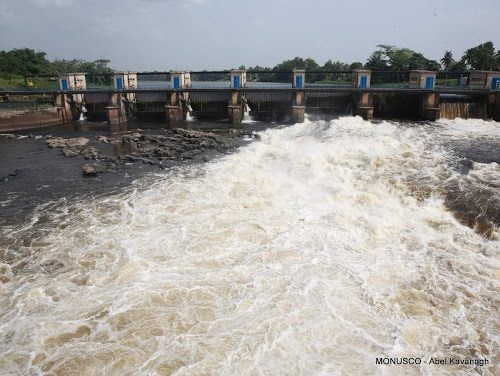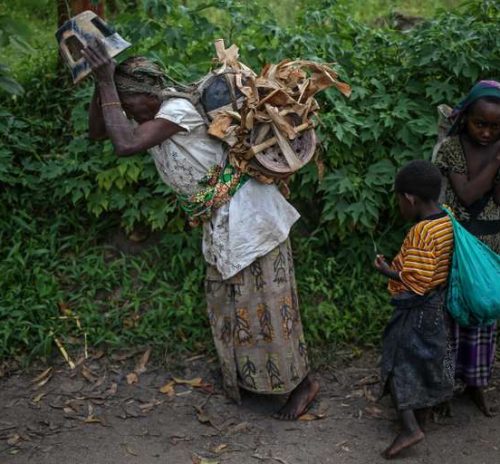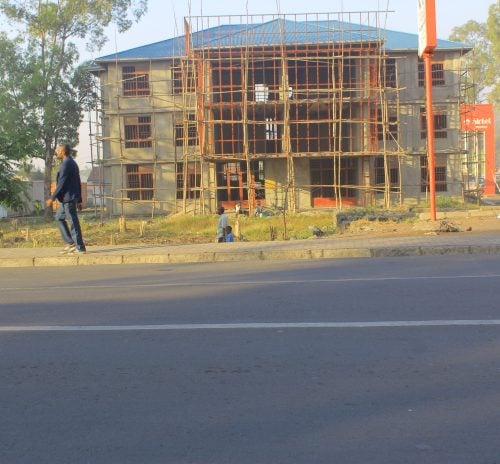In the Democratic Republic of Congo’s (DRC) northwestern city of Mbandaka, health workers spent recent months racing to contain the latest Ebola outbreak — including the first urban cases in the country since 1995. While the crisis appears to be abating, 28 people died from this bout of the disease.

The village of Ilanga, DRC has applied for “community forest” status from the provincial government. Photo by Molly Bergen/WCS, WWF, WRI
Meanwhile, more than 1,200 miles east in Virunga National Park, on May 11 ranger Rachel Masika Baraka was killed and two British tourists and their driver were abducted by armed attackers, forcing Africa’s oldest national park to once again close to tourists. (The tourists and driver have since been released.)
And just last month, new data revealed that tree cover loss reached a record high in DRC in 2017, increasing 6 percent from the previous year.
These types of disaster-focused headlines are what most of the world reads about the Congo. Global attention on the DRC’s challenges is important, but this type of reporting doesn’t tell the whole story. Instead, it helps fuel public perception that the place is beyond hope, and ignores the fact that the country has good news, too — and that every day, the people there are going about their lives as best they can.
For starters, the country contains more than half of the Congo Basin rainforest, which itself is the world’s largest rainforest after the Amazon. Not only do its trees absorb massive amounts of greenhouse gases from the atmosphere, they also provide habitat for wildlife found nowhere else on Earth — and innumerable resources on which millions of people depend. While DRC’s deforestation has increased in recent years, its forests are remarkably well preserved compared to other tropical nations.
Another bright spot: After years of collaboration between the Congolese government and NGOs including WRI, in 2016 the country passed new legislation allowing communities to apply for community forestry concessions that would grant them secure rights over the lands where they live. So far, 34 concessions have been approved in three provinces. These communities are now in various stages of establishing sustainable management plans for their concessions.
Before this, millions of people never had a say in what happens on the lands their families may have lived off for generations. Although this legislation is just the first step in a long process, it’s an important milestone.
Empowering rural residents to sustainably manage these forests is critical to protecting them. Research indicates that improving land tenure rights brings both economic and environmental benefits for forest communities. Studies also show that forests occupied by Indigenous Peoples and communities have lower deforestation rates than forests managed by other stakeholders.
While forces ranging from global criminal networks profiting from elephant poaching to local charcoal producers with no other source of fuel or income are posing urgent threats to this unique ecosystem, the good news is that bulk of this increasingly fragmented forest is still there to save — for now.
Learn more about the opportunities and challenges that community forestry poses for Congolese villagers — as well as other signs of hope in the Congo Basin rainforest — in this new multimedia story series.
Click here to read the original article.
Related posts
-

RDC: l’électricité réduit la pression sur le parc des Virunga
-

Avec les Pygmées de RDC, qui survivent et meurent méprisés de tous
-

La construction des maisons à étages affecte les boisements
